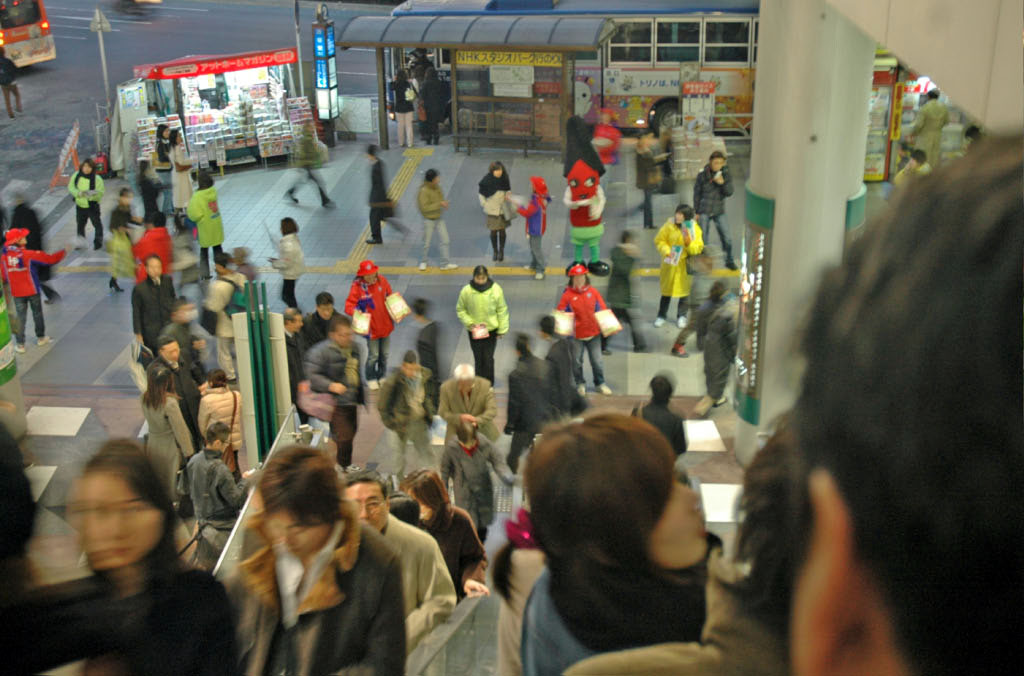This photo was taken on the escalator transporting passengers from the Keio Line exit of Shibuya Station and disgorging them into Tokyo’s busy Friday night streets. In close proximity to the foot of the escalator there are 11 people representing 5 organisations hawking free magazines. They are not there because they love to dress up in lime green and red uniforms they are there because someone pays them to be here, someone sees a business opportunity. You can see something similar in urban centers all over the world – but why? What are the properties that make these spaces so popular for targeting pedestrians?
Quantum physics aside, being physically located in one space implies that someone is not physically present somewhere else at the same time. The value to the hawkers is partly based on the rarity value of a physical presence being in that exact location at that time, and from the possibility that that persons consumption behaviour might be influenced by first taking a magazine, then browsing, sufficiently absorbing and using information within it. (I’ll resist the urge to write about the level of sensory engagement though its probably relevant here).
At some point in the future automated or semi-automated devices will be moving around these urban environments carrying out everyday chores on our behalf. The first of these are likely to be extensions of today’s personal vehicles – who needs valet parking when your car includes a self parking feature? But before long the range of tasks they can complete, and that we feel comfortable allowing them to carry out on our behalf will extend. The view from the escalator will include non-human hawkers and non-human ped-estrians.
If devices are moving around and negotiating spaces on our behalf, what is their value to the hawkers? What happens to a person’s value when its based on rarity, when something is maintains a physical presence on their behalf?
And what will the future hawkers be hawking?
